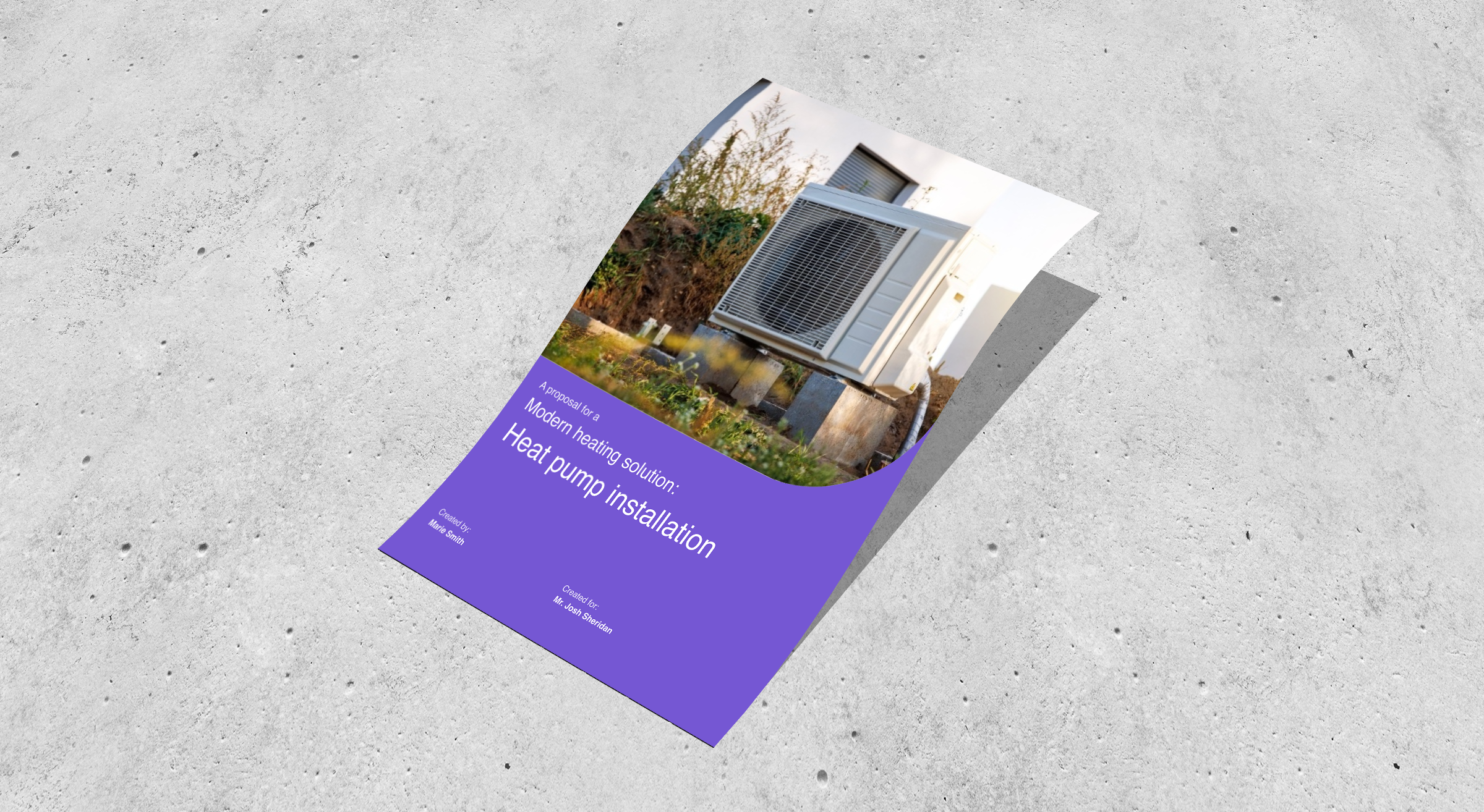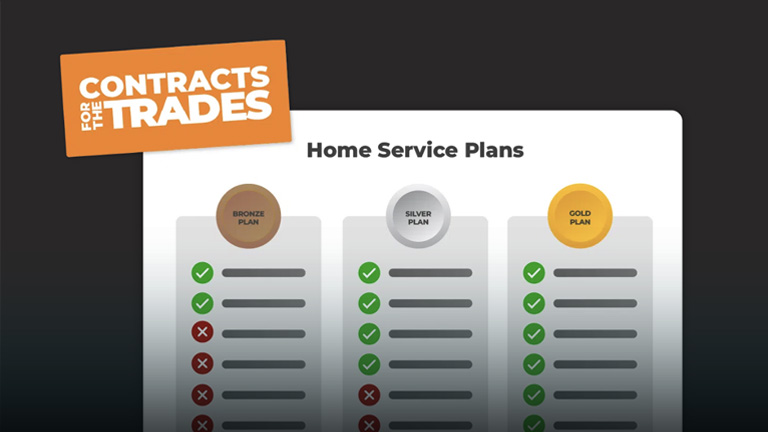Here’s Exactly How to Break Bad News to a Customer
March 29, 2023 | Read: 9 minutes

If you want to know how to break bad news to a customer, there are some important things to consider.
We’ve highlighted 6 important steps to keep in mind.
While you’ll do your best to avoid disappointing customers, unfortunate situations will arise from time to time.
But if a project is running behind, costs are increasing, or even if an engineer is running late, taking responsibility will help keep a customer on the side…
This is where having strategies to help you deliver bad news will show their value.
We’ve compiled the very best Dos and Don’ts of how to deliver bad news to a customer. You’ll find detailed tips, including advice from communication and business expert, Anne Miller, too!
This advice will help your team handle difficult situations, prevent conflict, and make it easier to find resolutions.
What to do when breaking bad news to a customer:
- Do give your customers a warning.
- Do give customers a compliment sandwich.
- Do bring customers solutions, not excuses.
What you don’t do when breaking bad news to customers:
- Don’t use the word “I”.
- Don’t say: “I know how you feel!”
- Don’t make the customer feel like a fool (even if they’re at fault).

How to break bad news to a customer:
No matter how loyal your customers are, you’ll deal with an upset or angry customer at some point.
While it can be a problem if complaints go unresolved, the aim is to not make a difficult situation worse.
These strategies will give you and your team the best chance to keep customers calm, win them over, and find helpful solutions to solve challenging problems.
Here are some of the best ways to break bad news to a customer (and even exceed customer expectations)!
1. Do give your customers a warning.
When it comes to conveying bad news, transparency is essential.
Warn the customer if you foresee a problem.
This step can help head off a problem before it starts. Warnings can go a long way to prevent customers from getting angry or upset. Your customer will appreciate it if you mention early on that a job is going to be delayed.
Perhaps it’s because a part you need has been delayed, or an engineer is unexpectedly ill. Advanced warnings are especially useful to cover planned preventive maintenance for sensitive assets.
With fair warning, these appointments can be rescheduled and ensure a customer’s assets remain compliant. Everyone wins.
If you’re a Commusoft client, don’t forget that our Asset maintenance software can help you keep track of all the assets you take care of at a customer’s property. If you’re using our job management software, you’ll be able to track asset type, models, and service history. These details help staff make informed decisions and take preventative action.
Bonus: with historical notes, your team can stay informed and measure customer satisfaction ratings over time. This will help even when different engineers attend a job!
2. Don’t use the word “I”.
We’re not saying you can’t ever refer to yourself in a conversation with the customer; rather that when it comes to giving bad news, you need to make sure the focus is on them, not you.
“The first thing employees do wrong is to see the issue from only their point of view,” says Anne Miller. “If you say, ‘I need more time’, that makes it about ‘me, the plumber’ or ‘me, the office worker'”.
Instead, you need to break the bad news in a way that shows the customer they’re number one. It’s a simple but effective way of showing customers you care.
As an example of what you could say, you could try something along the lines of:
“This job will take more time than we anticipated; while we understand you may be disappointed, we’ve caught this early. It means you’ll be getting a more robust system. We’ll take care of this for you as quickly as possible!
3. Give customers a compliment sandwich.
What we’re talking about here is an effective way to deliver bad news. With the sandwich approach, you start and end with good news, and place the bad news in the middle.
People tend to focus on the first and last things they hear, so it helps the customer leave the conversation feeling good, even when they’ve been hit with a piece of bad news.
For example, when a field service engineer is running late, don’t just dump this fact on the customer. Instead, say something like:
[The good news!] “We have our most experienced electrician assigned to fix that faulty wiring for you today.”
[Bad news.] “Unfortunately, he’s running a couple hours behind because an emergency appointment.”
[Good news!] “By way of apology, we’d like to offer you a discount on the service hours to make it up to you and as a thank you for being a loyal customer.”
It would also be sensible to follow up with a more exact time of arrival so customers aren’t left twiddling their thumbs.
Of course above is just an example. What slices of good news you choose to present depends on the situation! If you think creatively, you can make the bad news sting less and keep customer’s happy.
4. Don’t say: “I know how you feel!”
Imagine the following scenario to help explain this step:
Let’s say your customer is throwing a party to celebrate an engagement and needs their patio rebuilt, they’ve also requested a firepit and BBQ. Unfortunately, the materials you ordered have been delayed due to shipping errors, this may be outside of your control, but it means the work won’t be finished on time.
In an effort to make the customer feel better, many field service employees could be tempted to say: “I know how you feel…” but nothing could be worse!
Not only have you said “I” (our first big don’t) but unless you’re actually a bride or groom who’s had their celebrations decimated by unexpected delays, you don’t know how they feel.
As a result, the statement can come off as disingenuous or worse, patronising. This will add to the customer’s frustrations.
Instead, mirror back what you hear the customer saying (“You’re right, it’s unacceptable!”)
This ties into what we said at the start of the article, about understanding how to accept responsibility. Whilst the shipping delay is out of your control, you still need to take responsibility for the job.
For example, you could say:
“You’re right…this shouldn’t have happened, and you’re right to be frustrated, but we’re going to fix this…”
This validates the customer’s feelings and can help get the initial anger out of their system. While you could deflect and attempt to defend what happened, that is much more likely to incite an argument. Instead, the validation and offer of a solution is a strategy that can help resolve friction.
The actual solution you offer will vary, whether it’s compensation, like a discount, or perhaps six months of free upkeep. Ultimately, the most important thing here is to deliver the bad news in a way that helps solve the problem and move things forward: not delay or make them worse.
5. Do bring customers solutions, not excuses.
Similar to above, the best way to break bad news it to ensure you’re always being proactive. For example:
Let’s say you were hired to install new gutters and helmets to cover them.
The customer has insisted their gutters are five inches wide. You order the helmets based on their information, but when you arrive with the parts, you discover the gutters are actually four-and-a-half inches wide! You have to break the bad news that if the customer wants to have gutter helmets, they’re going to need all new gutters or to pay for the new helmets.
Miller suggests offering a set of solutions. For instance, explain that:
“The manufacturers don’t make helmets that fit your gutters, so if you want them, you’ll need all new gutters.
If you don’t want to get new gutters and still want to keep them clean without the helmets, what we can do is clean the gutters for you now, and come out every six months to keep them clear. Of course, there are the costs associated with both. Which option would you prefer?
[This strategy is] a way to move the customer toward a solution.”
Being proactive means customers won’t dwell on disappointment or on the mistake that’s been made, but can be involved with the solution, instead.
6. Don’t make the customer feel foolish.
In scenarios like the one above, it’s incredibly tempting to tell the customer that the problem is their fault. However, this would make the customer feel foolish—which wouldn’t result in a happy outcome.
You don’t have to take the fall by claiming responsibility for a problem the customer caused, but your office employee or field service engineer can soften their language when breaking the bad news to make the customer feel better about the mistake.
For example, you can say:
“I know you’re upset. It’s totally understandable that you thought the gutters were five inches because that’s a common size. But let’s look at how we can solve this together…”
Letting the customer know they made a common error as well as pointing out that “we can solve this together” puts you on the same side.
Altogether, it works as a useful way to help the customer shore up their self-esteem and move on to a solution, rather than feel foolish or dwell on the problem. As before, it’s about solving the problem for the customer and finding solutions to help: not making yourself feel superior.
How to break bad news to a customer and deliver great customer service:
And there you have it, our tips on how to break bad news to a customer!
These Do’s and Don’ts may seem simple, but they can be transformative and help you create great experiences for your customers.
If you enjoyed this post, consider subscribing to our newsletter where you’ll receive regular updates, videos, and more!
Otherwise, explore more ways to boost your customer service experience with The Customer Service Cheat Sheet! You’ll find 10 free email templates and a guide to help you find the right words for the communications that you send, every day!









